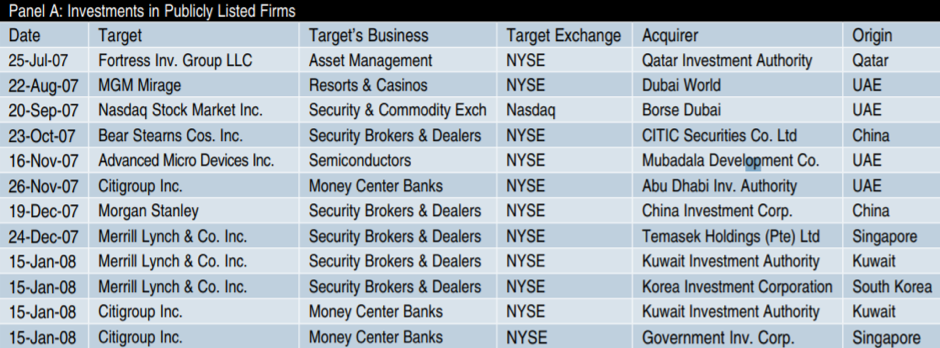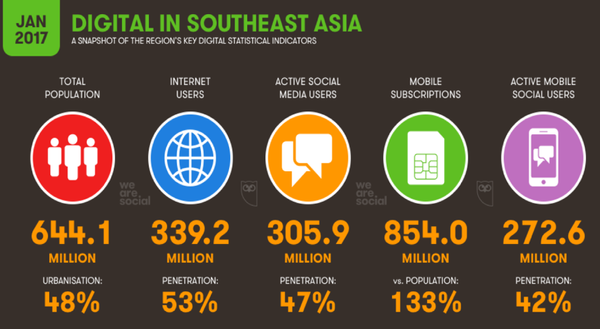A Country’s Piggy Bank

We’ve all heard the age-old advice; save up for a rainy day, spend a little less, invest that money and have enough to retire. Your favourite car, that house in the countryside, that trip to the Maldives you’ve been planning since the days of eating lunch at your desk. The message is clear, invest for the future. As we meticulously allocate funds to reap returns, so do countries through sovereign wealth funds (SWF).
SWFs are the investment funds of countries, which invest for the long-term benefit of its economy and its citizens. Funds are derived from accumulated trade and budget surpluses and from the exportation of natural resources. Sources are split between commodity-based and non-commodity-based sources. Oil and gas forms more than 50% of global SWF funding. Some countries even have multiple funds to meet specific investment goals of its government. According to SWF Institute, the 10 largest SWFs in the world at time of writing consist mainly of Middle Eastern and Asian funds, except for Norway’s Government Pension Fund. It holds the title of the largest SWF in the world, having more than $1 trillion of assets under management.
The Linaburg-Maduell Transparency Index measures the transparency of a fund’s operations on metrics such as how transparent it is about holdings, government ownership structure, investment process and objective. Funds are ranked from 1 to 10, from the non-transparent or “opaque” to the most transparent.
SWFs are split into 4 broad categories; savings, macro-stabilisation, pension reserve and strategic funds. They differ in their investment objectives and methodologies, such as having a short or long-term investment horizon, and projected liquidity requirements (indicating the frequency of future withdrawals from the fund). Each fund is split across 4 asset classes; cash, equities, fixed-income (bonds) and alternative investments such as private equity, hedge funds and real estate. In general, funds with longer investment horizons will be heavily weighted in equities as the longer time frame would ride out short-term market volatility and allow investments to bear fruit. Alternative assets tend to be found on funds with longer horizons, requiring longer planning and execution to exit profitably. Shorter investment horizons necessitate a larger proportion of liquid assets to meet large and often unexpected capital outflows due to higher liquidity requirements. Most SWFs are savings and macro-stabilisation funds.
Savings funds preserve and grow a country’s wealth for the future and have investment horizons that span decades. Countries rich in lucrative but inevitably finite natural resources such as oil, gas, precious metals and other commodities, channel revenue from sales into savings funds. This ensures future generations can reap the benefits of a depleted or stranded resource. SWFs such as the Kuwait Investment Authority and Saudi Arabia Public Investment Fund were set up to meet the future of depleted oil wells, stricter environmental regulations, and the proliferation of cheaper green-energy alternatives that renders hydrocarbon extraction uneconomic.
Macro-stabilisation funds are designed to mitigate the effects of the resource curse, an economic phenomenon in resource-rich countries that results in high government spending with soaring commodity prices, followed by austerity during downturns. Money is drawn down from these funds to make up for the loss of revenue, injecting liquidity and smoothing out the peaks and troughs of government spending. The funds are also used to help stabilise the value of a country’s currency during macroeconomic shocks. For these reasons, investment horizons are short and involve mainly liquid assets.
Pensive reserve funds invest to build capital for their government’s future pension obligations. An example would be Singapore’s GIC, which manages funds from Singapore’s Central Provident Fund, a compulsory savings plan for working Singaporeans to fund their retirement, healthcare, and housing needs. Returns between 1% and 5% are guaranteed by the government. GIC manages a fixed pool of the country’s savings and foreign reserves to generate good long-term returns that beat global inflation.
Strategic funds can form part of a country’s domestic economic policies, investing in strategic industries to nurture their development, promoting growth in the domestic and international economy as well as providing generous returns. They provide key early funding to small and medium enterprises and may take longer-term stakes to facilitate the growth in later stages of the business cycle. Some are even pro-active managers, assisting in restructuring and funding of distressed companies. Whilst such funds tend to have a domestic focus, some have reaped returns and dividends to venture into overseas markets. Singapore’s Temasek initially managed various state-owned-enterprises but eventually transitioned into a more globally orientated portfolio with stakes in Alibaba and Standard Chartered, while retaining a sizable domestic portfolio. In January 2018, Temasek joined Google in investing in Indonesian ride-hailing firm Go-Jek, which is preparing to launch in Singapore in October 2018 to compete with Malaysian rival Grab.
Apart from Norway and Singapore, several large SWFs have been facing scrutiny, particularly funds from the Middle East, scoring an average of 5 on the transparency index. The lack of transparency in these funds’ sizes and objectives, coupled with close links to their governments, have led to speculations of politically motivated investments. SWFs can clandestinely acquire strategic assets of another country, stealing proprietary information, patented technology and trade secrets. The bailout of major U.S financial firms during the global financial crises of 2007-2008 by Asian and Middle Eastern SWFs and the subsequent poor performance from these investments increased debate on investment strategies and put pressure on managers to avoid further losses.
These funds are institutional investors with large sums of capital ready to be injected. The range of companies they invest in adds to the available pool of capital accessible across the life cycle of businesses. Savings and pension funds invest current earnings for future generations, allowing individuals and countries to continue participating in the domestic and international economy for years to come. In times of need, SWFs have aided distressed companies, both domestic and international. Despite criticism, SWFs have their place in the international capital market.









